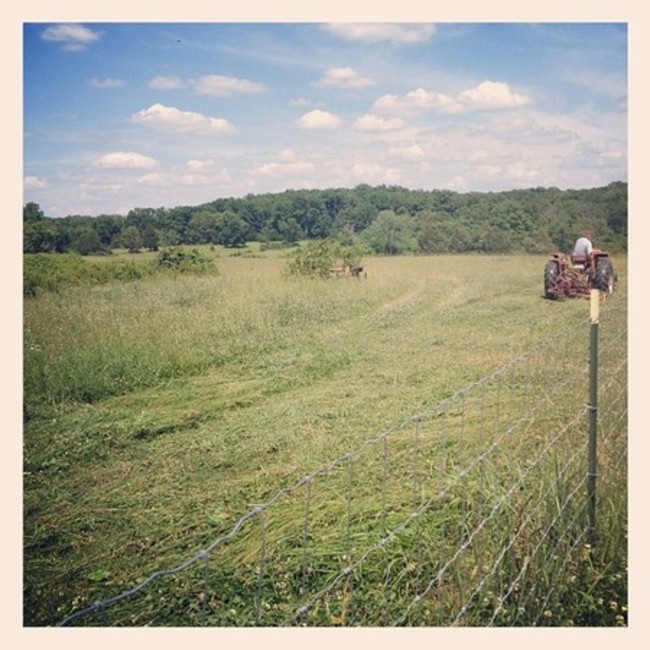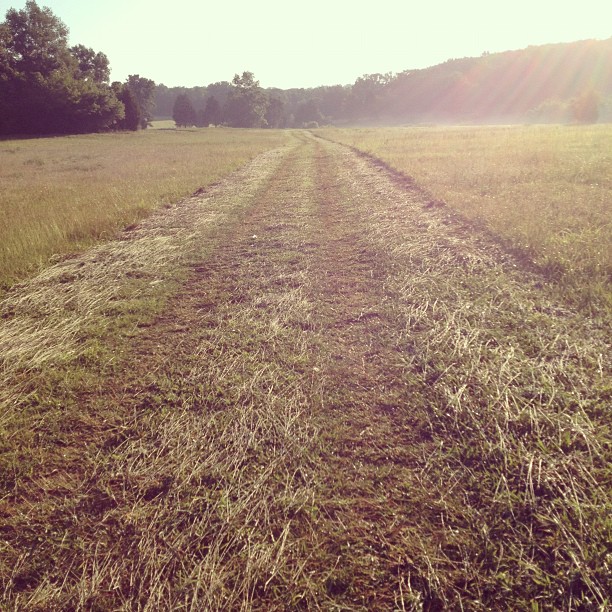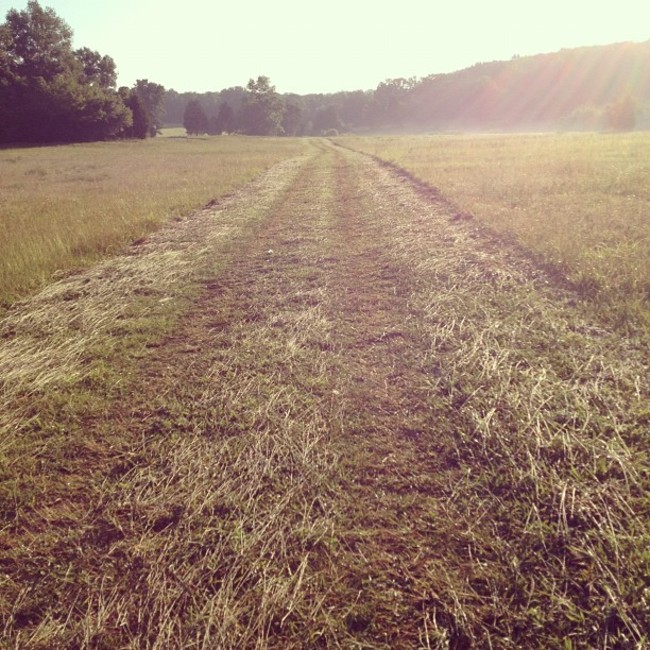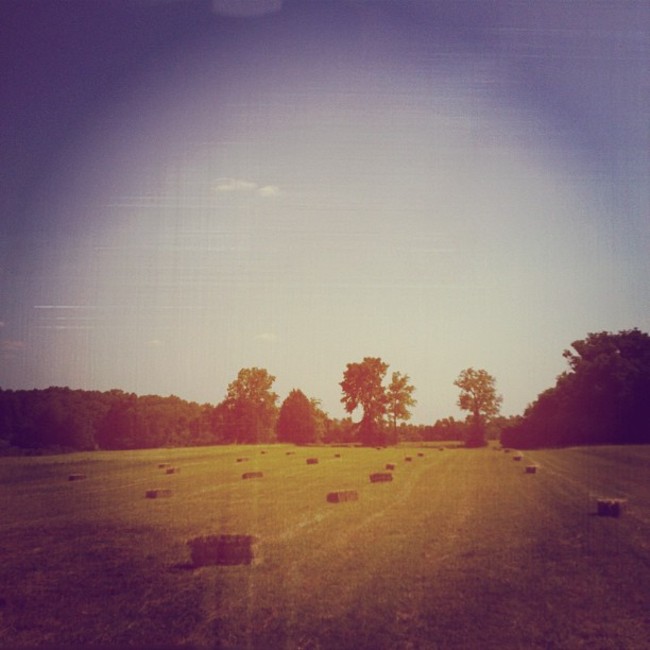
We’ve been posting a lot of photos over on Instagram recently, including the one above. If you use that app you should follow us. Sweetbreads takes some great photos throughout the day. I get to live vicariously through her updates, it’s fun. She also tweets a lot of them, so you can see them on Twitter if that’s more your style.
If you already follow us then you’ve seen that we hayed some of our pastures last week. Before we started farming I didn’t really think too much about haying. Grass grows, you cut it, bale it, and feed it to animals in the winter (or in a drought). No big deal.
It turns out, however, that there’s a lot more thought put into it than that. In fact, we almost didn’t cut any hay at all, and when we have more animals in the future we most likely won’t. This is because haying takes nutrients and organic matter off of the land and not all of it gets returned. By making hay you are removing the fertility of the land. This impacts the nutrition of your grazing animals as well as the following year’s growth. If you consistently take hay off the land and you don’t return that hay in the form of manure (or fertilizer) your land will suffer.
In our case, because we rotationally graze our animals, most of the hay will be returned as manure, but not all of it. We split our hay with the neighbor that cut it for us. He cut it, raked it and baled it since we don’t have any of the necessary equipment. I rode along on the last day and tossed and stacked bales.
Haying also detracts from the amount of existing forage available to your animals today. If you hay like we did at the end of May you risk not getting any rain until after the summer drought, which could set you back a meaningful amount.
 Cutting hay around the edges - helps us getting around and makes paths for the dogs too
Cutting hay around the edges - helps us getting around and makes paths for the dogs too
So why did we take hay off the land?
There’s a bunch of reasons. One is that we like to know what we’re feeding the goats. Our land hasn’t been sprayed in many years, so it’s good, clean, organic hay. We also know that it has lots of lespedeza, rose, and other very high quality forages that goats love, so it should be good for the dry and early lactation does in the winter.
The second reason is that we are probably going to put some lime and potentially other minerals on the land after this season anyway. Our soil isn’t in the best shape after being hayed for many years and not having any animals on it grazing and returning nutrients. So we have to find a way to bring it back up to shape. Ultimately, all of our nutrition comes from the soil and we need our mineral content in the soil to be at appropriately high levels, not deficient.
Another reason is that at our current stocking rate the animals could never come close to consuming all the forage out here. We wanted to keep at least a portion of it in an early vegetative state, so we hayed a about 20% of the land. Now we’ll get a chance to see how the regrowth looks and get a sense for what to expect if we hay again in the future. We can also compare how the goats do on pasture that is grown up and seeded out vs. younger pasture. We’ve heard that goats like both and I”m curious how they’ll do when the grasses are as tall as they are.
How did we decide where to hay?
It took a couple days of pondering to determine this one. In the end we decided on two places to cut. The first was around the edges of the pasture. This would make it easier for us to get around on foot and on the bicycle and also provide lanes for the dogs to run without getting grass seeds in their eyes and ears. They love the newly cut areas and I think it also gives them an advantage when chasing prey since they can run faster in newly mowed areas and they know better where those areas are. A coyote in the tall grass doesn’t stand a chance.
The second place we cut hay was in the far back pasture and only in areas where there weren’t big shrubs. We want to keep the large shrubs for the goats. That’s the best browsing material for them and also the worst hay. Those big shrubs take far longer to grow back as well, so if you cut ‘em down don’t expect to graze them for a while. We also chose the far back fields because we don’t plan to graze the goats in that area again until the fall. Why? It’s really far away from the milking barn. When it gets super hot out here we want the goats to be in the closest pastures. We don’t want them to expend a ton of energy walking back and forth in the summer heat. For that reason they haven’t even touched the front area yet. That’s for June, July and August grazing.

 We cut along both sides of the lane down the middle of our farmAnd that’s enough hay talk. Sorry to bore you, but it was a big topic of discussion around here for a couple weeks.
We cut along both sides of the lane down the middle of our farmAnd that’s enough hay talk. Sorry to bore you, but it was a big topic of discussion around here for a couple weeks.



